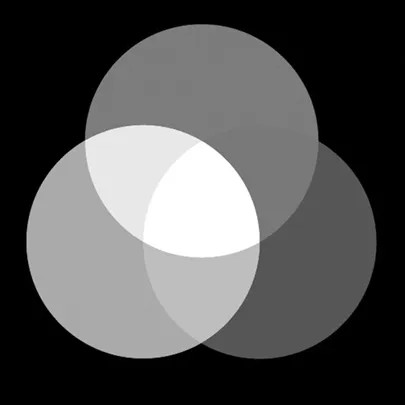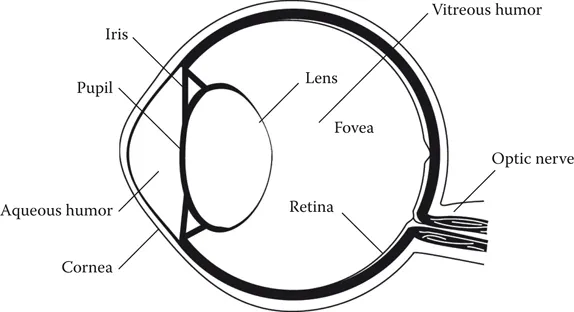
eBook - ePub
Visual Experiences
A Concise Guide to Digital Interface Design
Carla Viviana Coleman
This is a test
Buch teilen
- 283 Seiten
- English
- ePUB (handyfreundlich)
- Über iOS und Android verfügbar
eBook - ePub
Visual Experiences
A Concise Guide to Digital Interface Design
Carla Viviana Coleman
Angaben zum Buch
Buchvorschau
Inhaltsverzeichnis
Quellenangaben
Über dieses Buch
Visual Experiences: A Concise Guide to Digital Interface Design provides step-by-step examples to enable readers to create an interface, guiding them from sketching an idea to creating an interactive prototype. This creation of a visual experience is achieved in three steps: thought, design, and interaction. This book focuses on the visual experience of digital interface design from the initial idea to end-user prototype.
Key Features
- Shows how to design visual digital interface experiences: a concise guide to creating successful prototypes without programming.
- Teaches the whole process of how to sketch, design, and create interactions.
- Unlike other books, this book does not just give a list of terminologies, but workable examples and methods.
- Includes a wide range of basic to advanced exercises geared towards professionals and students alike.
- Includes many illustrations throughout the book, guiding the reader through the process.
Häufig gestellte Fragen
Wie kann ich mein Abo kündigen?
Gehe einfach zum Kontobereich in den Einstellungen und klicke auf „Abo kündigen“ – ganz einfach. Nachdem du gekündigt hast, bleibt deine Mitgliedschaft für den verbleibenden Abozeitraum, den du bereits bezahlt hast, aktiv. Mehr Informationen hier.
(Wie) Kann ich Bücher herunterladen?
Derzeit stehen all unsere auf Mobilgeräte reagierenden ePub-Bücher zum Download über die App zur Verfügung. Die meisten unserer PDFs stehen ebenfalls zum Download bereit; wir arbeiten daran, auch die übrigen PDFs zum Download anzubieten, bei denen dies aktuell noch nicht möglich ist. Weitere Informationen hier.
Welcher Unterschied besteht bei den Preisen zwischen den Aboplänen?
Mit beiden Aboplänen erhältst du vollen Zugang zur Bibliothek und allen Funktionen von Perlego. Die einzigen Unterschiede bestehen im Preis und dem Abozeitraum: Mit dem Jahresabo sparst du auf 12 Monate gerechnet im Vergleich zum Monatsabo rund 30 %.
Was ist Perlego?
Wir sind ein Online-Abodienst für Lehrbücher, bei dem du für weniger als den Preis eines einzelnen Buches pro Monat Zugang zu einer ganzen Online-Bibliothek erhältst. Mit über 1 Million Büchern zu über 1.000 verschiedenen Themen haben wir bestimmt alles, was du brauchst! Weitere Informationen hier.
Unterstützt Perlego Text-zu-Sprache?
Achte auf das Symbol zum Vorlesen in deinem nächsten Buch, um zu sehen, ob du es dir auch anhören kannst. Bei diesem Tool wird dir Text laut vorgelesen, wobei der Text beim Vorlesen auch grafisch hervorgehoben wird. Du kannst das Vorlesen jederzeit anhalten, beschleunigen und verlangsamen. Weitere Informationen hier.
Ist Visual Experiences als Online-PDF/ePub verfügbar?
Ja, du hast Zugang zu Visual Experiences von Carla Viviana Coleman im PDF- und/oder ePub-Format sowie zu anderen beliebten Büchern aus Conception & Conception Web. Aus unserem Katalog stehen dir über 1 Million Bücher zur Verfügung.
Information
SECTION II
Design
4
Psychology of Color
Introduction
Brain Stimulation
Visual Perception of the Brain
Color System
Color Theory
References
Introduction
Color is part of our daily routine, from our waking life and imagination to our dreams. The meaning of color starts from our general perspective. For example, the sun is yellow, which we know without thinking. We have seen the sun so many times that it is part of our subconscious minds. But the meaning of yellow in our dreams is an entirely different answer; each person will react to yellow from a different perspective. Do they have a fear of yellow, or perhaps a negative or positive association with it? In this case, the meaning of yellow will vary from individual to individual.
We do not discuss in depth how to understand color’s various levels and types of meaning. Instead, we analyze the human visual experience solely in the context of interaction with interfaces. We cannot classify and define all colors, because everyone has a different relationship to color based on past experience. Therefore, we consider the basics of color and their general meanings, which may vary according by country and culture.
Considered psychologically, color is a nonvocal, purely visual means of communication. In design, color is similar to typefaces. How you use color—darker or lighter—creates a personality that complements the content, including the images and typography. The color or colors used speak to the user just as much as the type itself. It is important to make a decision early in your project about what color or colors to use in the interface, because without color the interface would be incomplete.

Figure 4.1
(See color insert.) Color energies diagram.
Brain Stimulation
The use of color creates different dimensions of depth within the hierarchy and identity of the UI. The user not only accesses information but also receives subconscious and psychological messages from the colors in the UI that are related specifically to the user.
Each type of color stimulates different parts of our brain, such as the following:
1. Anger
2. Hunger
3. Happiness
4. Worry
5. Fatigue
6. Excitement
7. Concentration
Swiss psychologist Carl Jung identified four color energies that define our temperaments: cool blue, earth green, sunshine yellow, and fiery red (“Can Color Really Change How You Feel and Act?” 2016). Everyone has characteristics of all these colors, but some people have less of some colors and more of others. Therefore, there is no perfect equation defining universal color psychology, but the characteristics may be used to keep testing (“Can Color Really Change How You Feel and Act?” 2016).
The four main energy characteristic colors are listed below with their meanings and how our bodies and minds react to them (Figure 4.1).
Cool blue: cautious, precise, deliberate, questioning, formal
Earth green: caring, encouraging, sharing, patient, relaxed
Sunshine yellow: sociable, dynamic, demonstrative, enthusiastic, persuasive
Fiery red: competitive, demanding, determined, strong-willed, purposeful
A wide range of theories from culture, science, and religion can help us understand how to use colors. In applying color to user interfaces, we must consider some of these aspects to match the use of color to the user interface (Meerwein, Rodeck, and Mahnke 2007).
Visual Perception of the Brain
The relationships between visual perception and interfaces have evolved rapidly since early digital-computing interfaces, including the way in which we interact with them. The ergonomics of visual interaction in the past usually involved sitting at a desk. Now, however, we have interfaces almost everywhere, from cars to ATM machines. Our entire environment involves interfaces, one way or another, whether we are young or old.
Our brain required adjustment to all these changes. Not all screens are the same. In 1990, computer screens were very low in resolution compared with today because of computers’ memory capacities. Our visual perception has adjusted accordingly.
Color System
Digital interfaces use the RGB color system, which stands for red, green, and blue. Zooming into any screen, you can see how RGB pixels are arranged to create colors. This process is called additive color, which is a very different method compared with using oils or any other type of physical paint. Physical colors are mixed to create subtractive color, which is based on red, yellow, and blue as primary. We use both types of color systems daily, from watching TV to reading a printed book. Figure 4.2 shows how the process of light creates the various colors we distinguish with our eyes.

Figure 4.2
(See color insert.) Red, green, and blue mixed on a screen, which always contains a black background. Mixing all three colors yields white.
The wonderful miracle of our visual system allows us to enjoy, interact, and experience the world around us. This system comprises two main parts: first, the brain, which does all the complex processing of imagery, and second, the eye, which receives light rays in the visual wavelengths of the electromagnetic spectrum, usually 300–700 nm (Figure 4.3). The eye receives light and sends an electrical signal to the brain through the optic nerve. Light passes through the eye in the following order: cornea, aqueous humor, iris, lens, vitreous humor, and finally retina.

Figure 4.3
Diagram of the eye.
The cornea is a transparent layer. The iris creates a round aperture, varying in size. When bright light enters the eye, the iris gets smaller, while when it is dark, the iris dilates and expands. The fovea is the area where human vision is the sharpest. The retina recog...